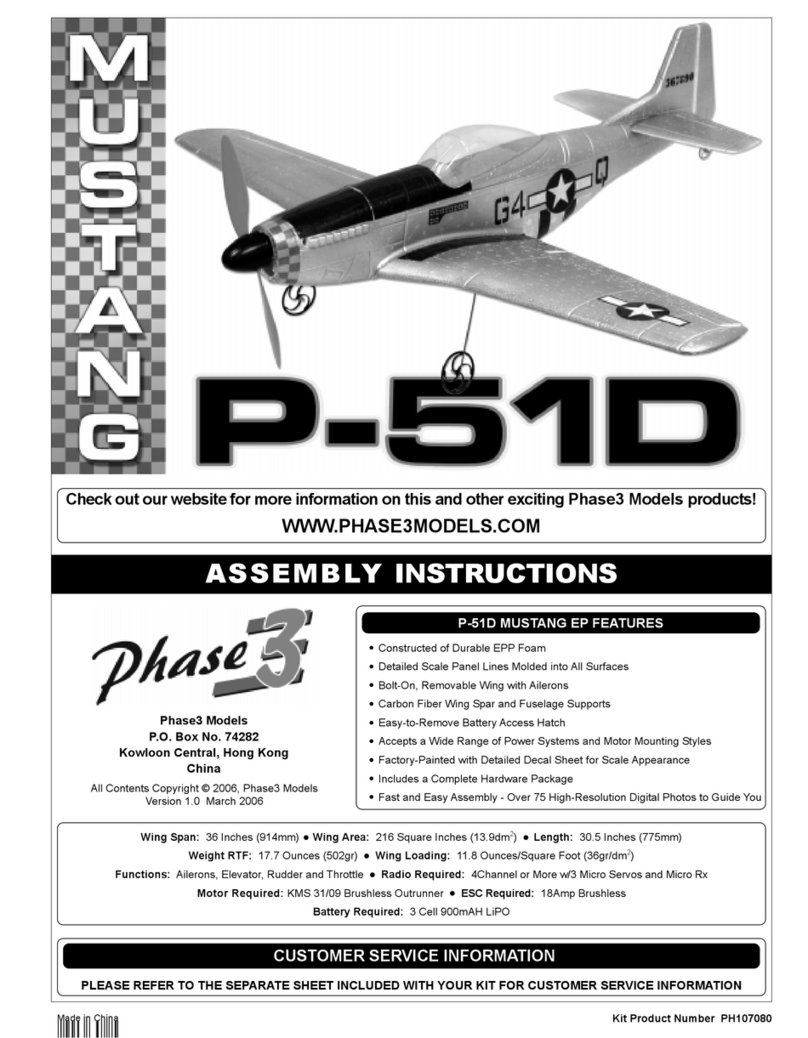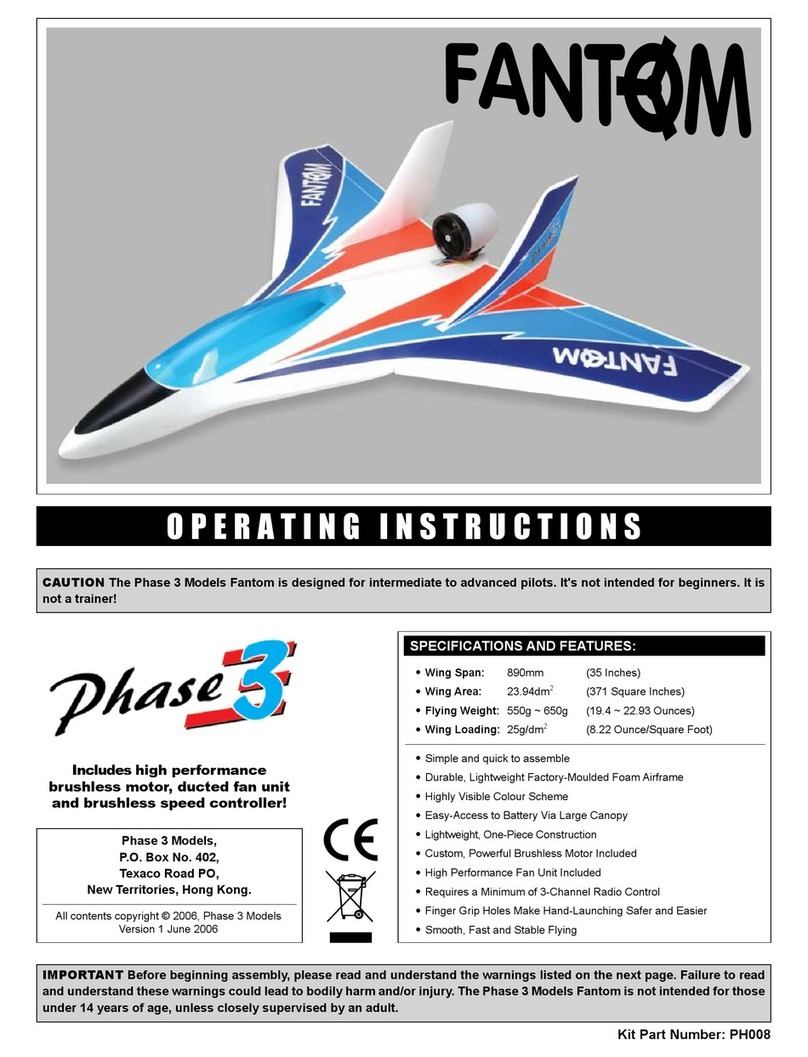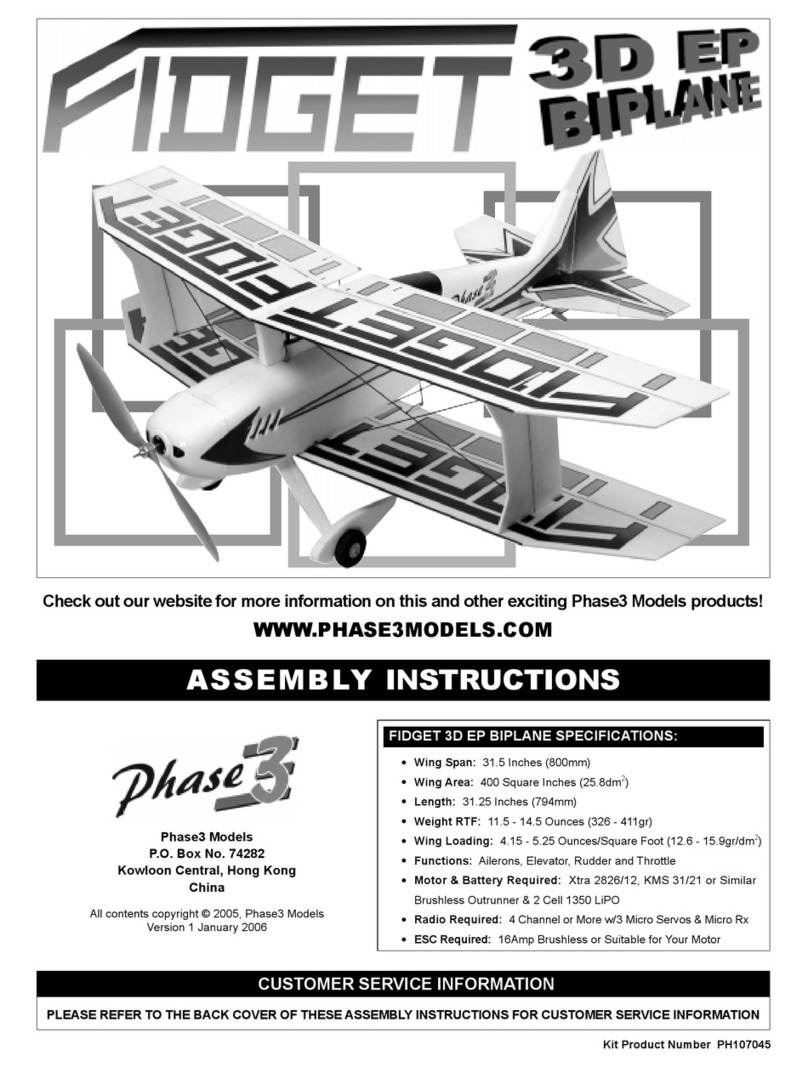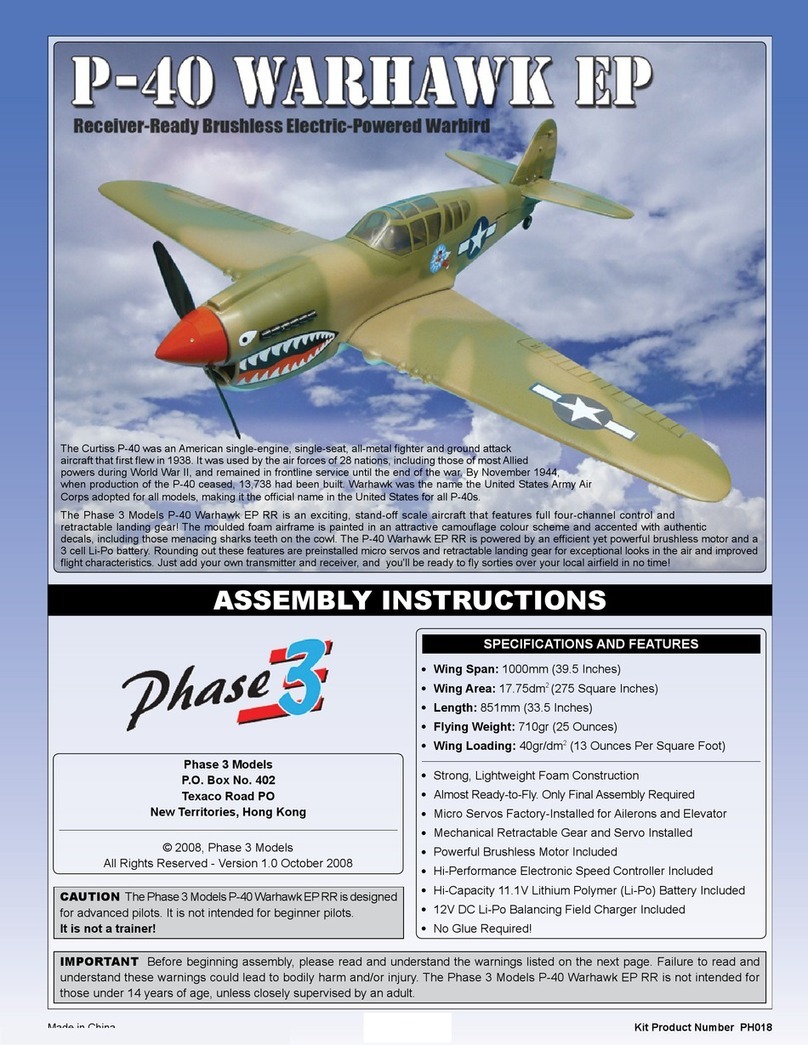Page 2
TABLE OF CONTENTS
Thank you for purchasing the Phase 3 Models P-38 Lightning EP. We're condent that the quality of your new aircraft meets
and even exceeds your expectations. Before completing the assembly of your new aircraft, please carefully read through these
assembly instructions in their entirety. Doing so will ensure your success the rst time around!
These assembly instructions are designed to guide you through the entire assembly process of your new aircraft in the least amount of
time possible. Along the way you'll learn how to properly assemble your new aircraft and also learn tips that will help you in the future.
We have listed some of our recommendations below. Please read through them before beginning assembly.
lPlease read through each step before beginning assembly. You
should nd the layout very complete and straightforward. Our goal
is to guide you through assembly without any of the headaches
and hassles that you might expect.
lThere are check boxes next to each procedure. After you complete
a procedure, check off the box. This will help prevent you from
losing your place.
lCover your work table with brown paper or a soft cloth, both to
protect the table and to protect the parts.
lKeep a couple of small bowls or jars handy to put the small parts
in after you open the accessory bags.
lWe're all excited to get a new aircraft in the air, but take your
time. This will ensure you build a straight, strong and great ying
aircraft.
lIf you come across this symbol +, it means that this is an
important point or an assembly hint.
During WW II, Lockheed developed and produced the P-38 Lightning as a high-altitude, long-range ghter for the U.S. Army Air Corps.
Since the rst day that this unique aircraft entered combat, the P-38 Lightning soon became known as the "Forked Tail Devil".
Phase 3 Models is proud to bring you this 1/15th scale model of the Lockheed P-38 Lightning. We've not only reproduced this great
aircraft in great detail, we've pioneered new technologies in the model industry to bring you the best model possible.
With new production procedures and technologies developed by Phase 3 Models, all the plastic parts, reinforced carbon rods, tubing
for electrical wires, and control systems are pre-installed inside the moulded structure and merged with the foam material, just like they
are born together naturally. This makes the aircraft structure stronger and better looking, and results in quick, simple, and precise
assembly. No glue is required for nal assembly!
One of the biggest distractions from the look of a moulded foam aircraft are the dimples from steam holes everywhere on the airframe
surface, but our new technology changes this. With new moulding techniques, Phase 3 Models is able to mould the foam structure
without any unsightly dimples. The aircraft's surface is beautiful and smooth!
On top of all this, we've included many ne details that are found on the full-scale aircraft. These details include the canopy frame,
machine guns, engine cowlings, turbo chargers, wheels and wheel doors.....even ner details like gun shell exit outlets, and formation
lights. The Phase 3 Models P-38 Lightning EP is truly a yable static model!
Due to the great power to weight ratio and perfect aerodynamic design, the aircraft is easy to control, ies precisely, and is manoeuvrable
at both fast and slow airspeeds. The aircraft can be built without landing gear and be hand-launched or it can be built with landing gear
and a steerable nose gear for take-off and landing from hard surfaces. The Phase 3 Models P-38 Lightning EP is truly a great model!
INTRODUCTION
Introduction...................................................................................2
Our Guarantee..............................................................................2
Safety Warnings ...........................................................................3
Items Required for Flight ..............................................................4
Tools and Supplies Required for Assembly ..................................4
Kit Contents...............................................................................4-6
Tips From the Pros ....................................................................... 6
Assembling the P-38 Lightning EP..........................................7-19
Balance Point (C/G) and Control Throws .....................Back Cover
Phase 3 Models guarantees this kit to be free from defects in both material and workmanship at the date of purchase. This does not cover any component
parts damaged by use, misuse or modication. In no case shall Phase 3 Model's liability exceed the original cost of the purchased kit.
In that Phase 3 Models has no control over the nal assembly or material used for nal assembly, no liability shall be assumed for any damage resulting from
the use by the user of the nal user-assembled product. By the act of using the nal user-assembled product, the user accepts all resulting liability.
OUR GUARANTEE

































